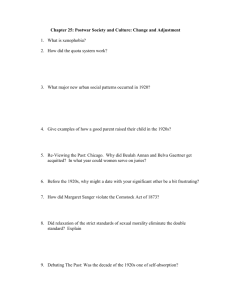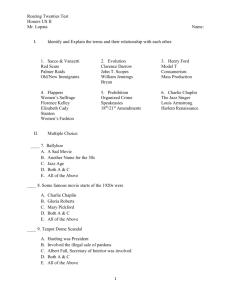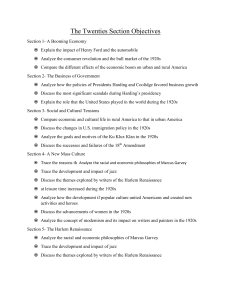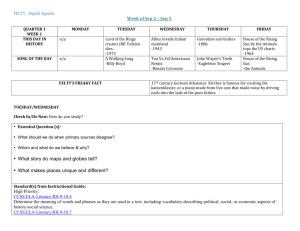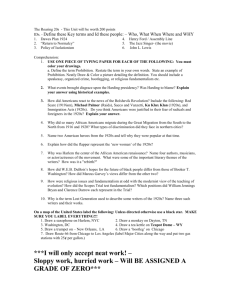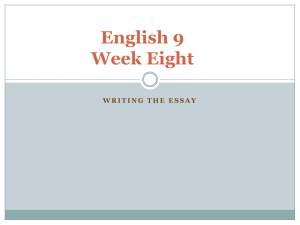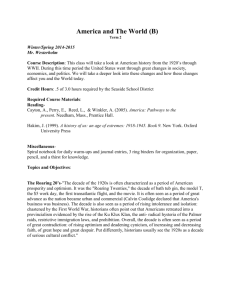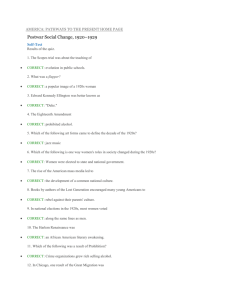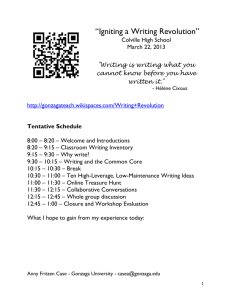File
advertisement
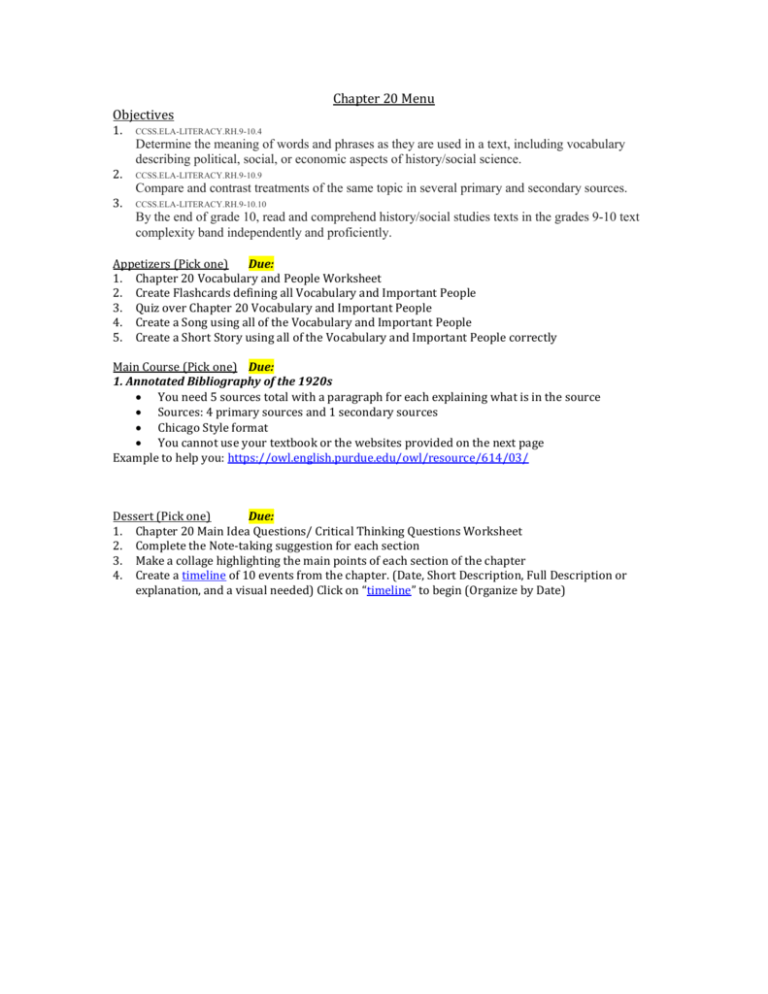
Objectives 1. Chapter 20 Menu CCSS.ELA-LITERACY.RH.9-10.4 Determine the meaning of words and phrases as they are used in a text, including vocabulary describing political, social, or economic aspects of history/social science. 2. CCSS.ELA-LITERACY.RH.9-10.9 Compare and contrast treatments of the same topic in several primary and secondary sources. 3. CCSS.ELA-LITERACY.RH.9-10.10 By the end of grade 10, read and comprehend history/social studies texts in the grades 9-10 text complexity band independently and proficiently. Appetizers (Pick one) Due: 1. Chapter 20 Vocabulary and People Worksheet 2. Create Flashcards defining all Vocabulary and Important People 3. Quiz over Chapter 20 Vocabulary and Important People 4. Create a Song using all of the Vocabulary and Important People 5. Create a Short Story using all of the Vocabulary and Important People correctly Main Course (Pick one) Due: 1. Annotated Bibliography of the 1920s You need 5 sources total with a paragraph for each explaining what is in the source Sources: 4 primary sources and 1 secondary sources Chicago Style format You cannot use your textbook or the websites provided on the next page Example to help you: https://owl.english.purdue.edu/owl/resource/614/03/ Dessert (Pick one) Due: 1. Chapter 20 Main Idea Questions/ Critical Thinking Questions Worksheet 2. Complete the Note-taking suggestion for each section 3. Make a collage highlighting the main points of each section of the chapter 4. Create a timeline of 10 events from the chapter. (Date, Short Description, Full Description or explanation, and a visual needed) Click on “timeline” to begin (Organize by Date) Expanding Your Knowledge (Optional) 1. http://www.thepeoplehistory.com/1920s.html a. Timeline of the 1920s Book Suggestions in the High School Library (25 points extra credit to read and write a book summary and analysis – 2 pages double- spaced) Hanson, Erica. 1999. The 1920s. San Diego, Calif: Lucent Books. Russell, Francis. 1968. The shadow of Blooming Grove: Warren G. Harding in his times. New York: McGraw-Hill. Chapter 20 Debate Questions Remember: you will need to explain all of your answers! Questions: 1. Which had more of an impact on society: Automobile, Installment buying, or buying on margin? 2. Do you think the Dawes Plan was a good move for the United States? 3. Do you agree with the Quota System that was established by the Emergency Quota Act of 1921 and the National Origins Act of 1924? 4. Do you think Prohibition was a good idea? 5. Do you agree with Marcus Garvey’s “Back to Africa” movement? Chapter 20 – The Twenties Vocabulary Mass Production Model T Scientific Management Assembly Line Consumer Revolution Installment buying Bull Market Buying on Margin Teapot Dome Scandal Washington Naval Disarmament Conference Kellog-Briand Pact Dawes Plan Modernism Fundamentalism Scopes Trial Quota system Ku Klux Klan Prohibition Eighteenth Amendment Volstead Act Bootlegger The Jazz Singer Flapper “Lost Generation” Jazz Harlem Renaissance Important People Henry Ford Andrew Mellon Herbert Hoover Calvin Coolidge Clarence Darrow Charlie Chaplin Babe Ruth Charles Lindbergh Sigmund Freud F. Scott Fitzgerald Ernest Hemingway Marcus Garvey Louis Armstrong Bessie Smith Claude McKay Langston Hughes Zora Neale Hurston Main Idea Questions Section 1 How is the rise of the automobile an example of technology affecting attitudes or values? Why do you think many advertisers began to focus on the benefits of their products rather than on the products themselves? Section 2 How did the approach to government of Harding and Coolidge differ from that of the Progressives? Do you think that Harding should be held responsible for the scandals in his administration? Why or why not? Section 3 How did the two sides in the Scopes Trial represent conflicting value systems? What did each side value most? Why do you think the revived Ku Klux Klan was able to spread beyond the South and even into some urban areas? Section 4 How did the political role of American women change in years after World War I? Reread the selection from The Great Gatsby, in section 4. How does it reflect other information you have learned about the society of the 1920s? Section 5 Why do you think Marcus Garvey rejected the goals of earlier African American leaders such as Washington and Du Bois? How did jazz blend cultural influences and crosscultural divides? Analyzing Political Cartoons (Page 667) 1. 2. Compare (Page 673) 1. 2. Transfer Activities (Page 674) 1. 2. Thinking Critically (page 677) 1. 2. Thinking Critically (Page 683) 1. 2. Thinking Critically (page 689) 1. 2. Thinking Critically (page 695) 1. 2. Document-Based Assessment (page 699) 1. 2. 3.
